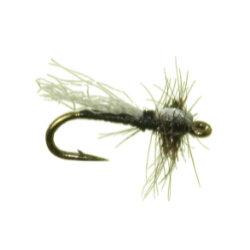Go to ROD & LINE PREP, RIGS, VERSATILITY, CASTING, THE MAYFLY, THE CADDISFLY, THE STONEFLY, BAIT
The Midge - Life Cycle Overview and Fly Suggestions
Habitat
Activate throughout the year.
Found in streams, rivers, lakes and ponds.
Technique
With Midges, go “small”.
Drift it naturally.
Larva can be found very deep in lakes and slow-moving water.
Hatch
Spring - Winter
Midges are the most common insect consumed by trout and are especially good choices during Winter and Spring when other food sources are not as prevalent.
Midge Bloodworm Larva
Midge Pupa
Midge Fly
Midge Stages & Fly Suggestions
Midge Larva
Worm like appearance; the common red midges are known as “bloodworms”. They exist in shades of green and brown as well.
Zebra Midge
ICU Midge
French Chironomid
Midge Pupa/Emerger
Pupa fill with gas, giving them a sparkle and helping them rise to the surface. Pupa breaks through water and sheds its tube-like body.
Medallion Midge Pupa
Hatching Midge
Mercury RS2 Flashback
Midge Adult Fly
Slim swept wings & segmented bodies. Flies mate and then deposit eggs in water and die.
Griffith’s Gnat
Antonio’s Quill Midge
Adult Midge
Fishing Rig Opportunities
Subsurface Fly Rig
Solo Larva Nymph
Double Larva Nymphs
Larva Nymph + Pupa/Emerger
Dry Dropper Rig
Dry Fly + Larva Nymph
Dry Fly + Pupa
Dry Fly Rig
Dry Fly Rig












